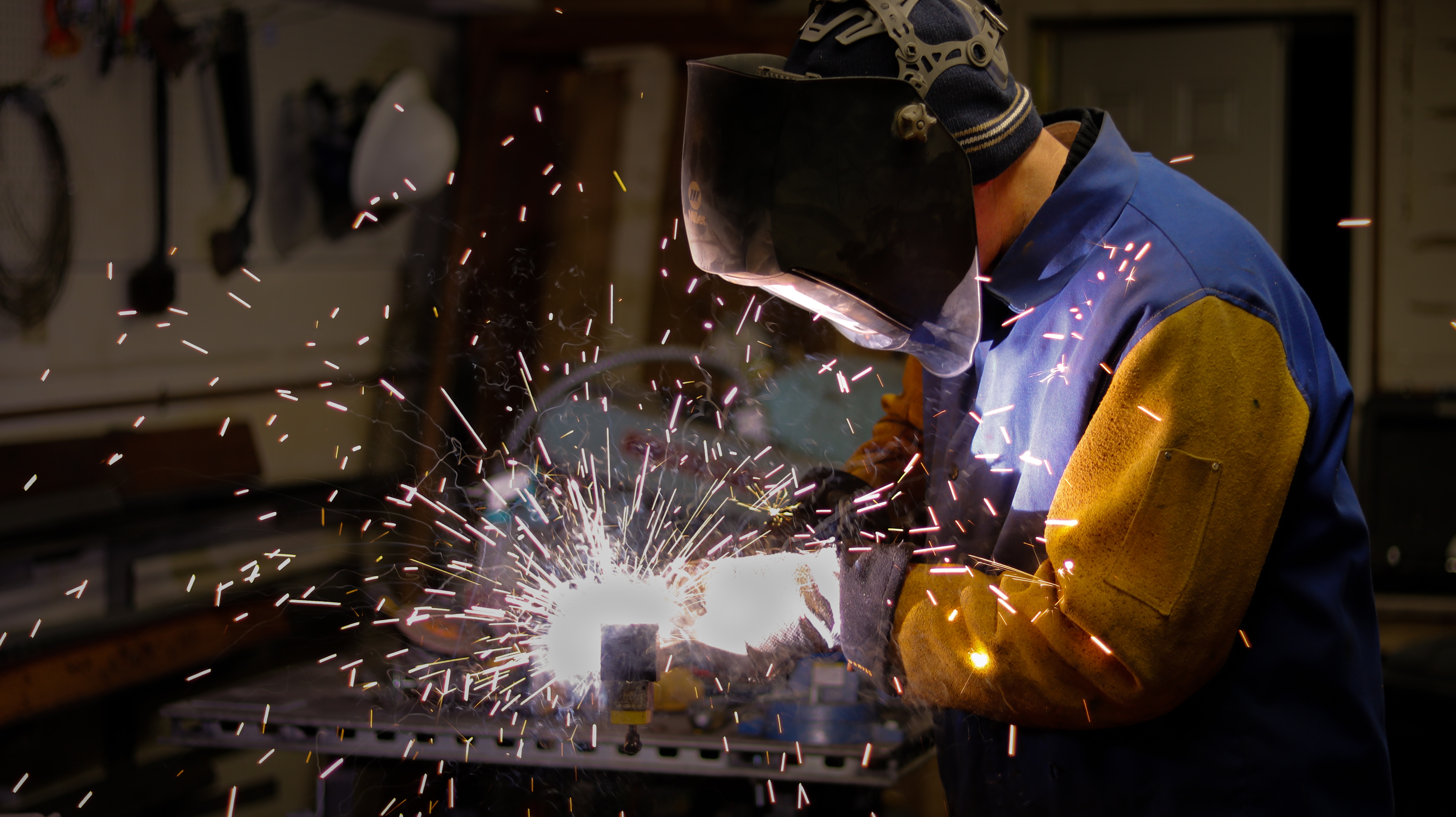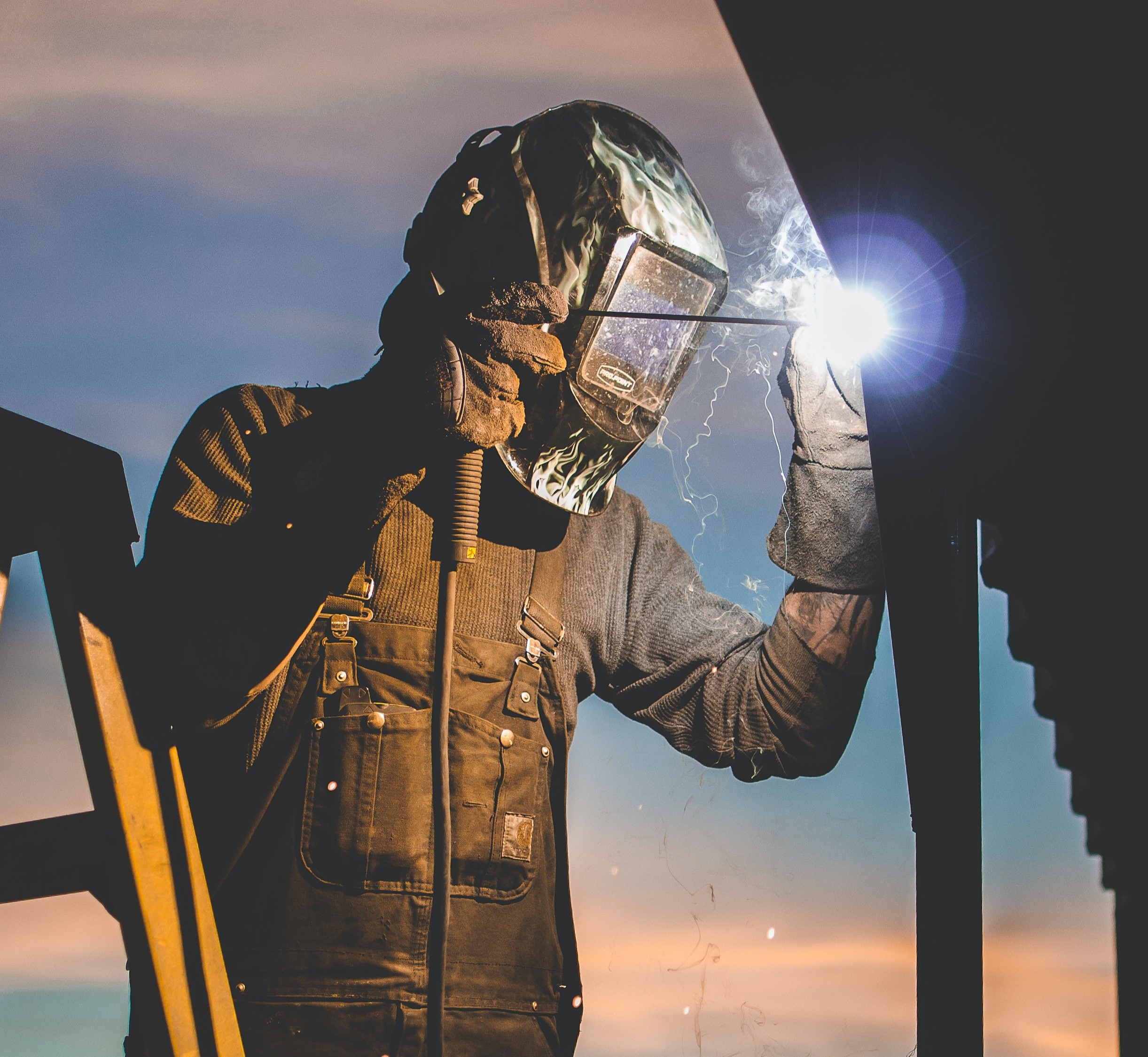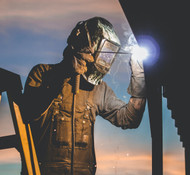Winter Welding Tips – Cold Weather Welding
Nov 16th 2023
When the temperature drops, the cold can pose a significant threat to your welding projects, personal safety, and equipment performance. Whether you're a seasoned welder or a newbie searching for cold-weather welding insight, we’re here to answer the questions you have. So, let's get started on your journey to mastering winter welding.
Staying Warm While Welding in the Cold
When winter comes around, staying warm during welding becomes a high priority. Protecting yourself from the cold not only ensures your comfort but also enhances your safety and welding performance. Here are some key strategies for staying warm while welding in the cold:
Dressing for Success
Dressing in layers is a much. You can start with a moisture-wicking base layer to keep sweat away from your skin. Add an insulating layer for warmth such as the Black Stallion TruGaurd 200 FR Hooded Sweatshirt, and finish with a windproof and waterproof outer layer, like a Miller Leather Welding Jacket to shield against the elements.

Invest in cold-weather welding gear, such as insulated coveralls, thermal welding jackets, and pants designed for the cold. The PIP Ironcat Split Leather Welding Jacket and the Black Stallion Split Cowhide Split-Leg Chaps are a great combination of leather gear to help combat the cold. Ensure that your clothing is not too tight to allow for proper circulation and flexibility.
Cold hands can lead to reduced dexterity and discomfort. Use insulated welding gloves designed to keep your hands warm without sacrificing safety. Black Stallion Premium Grain Pigskin Winter Drivers Gloves are a warm pair of work gloves for when you’re not welding.
Keep your toes toasty with insulated steel-toed boots. These not only provide protection but also prevent cold surfaces from sapping heat from your feet. Remember, the temperature of your feet plays a big role in the rest of your body temperature so keep them warm.
Consider using a winter helmet liner such as the Anchor Brand Polyfiber Cotton Winter Liner which is the perfect cold-weather liner for underneath your hard hat or welding helmet.
Remember that staying warm isn't just about comfort—it's also about maintaining your focus and safety while welding in challenging winter conditions. Proper clothing and PPE can make all the difference.
Precautions for Safe Winter Welding
Welding in the winter can present unique safety challenges due to cold temperatures, reduced visibility, and slippery conditions. Taking the right precautions is essential to ensure a safe and successful welding experience during the cold season. Here are some key safety measures and precautions to keep in mind:
Safety Measures
Ensure proper lighting in your work area. Winter days are shorter, and reduced daylight can affect your visibility. Invest in additional lighting sources to illuminate the welding area effectively. Regularly clean and check your welding helmet's auto-darkening lens for any moisture or frost buildup that can obstruct your vision. Proper airflow is essential to disperse fumes and prevent their accumulation in an enclosed area, which can be harmful to your health.

Taking these precautions will help you maintain a safe working environment during winter welding. Safety should always be a top priority, and being proactive in addressing cold-weather safety concerns is crucial for a successful and secure welding operation.
Combatting Cold Weather Damage
Welding equipment is a significant investment, and the frigid temperatures of winter can pose serious risks to its performance and longevity. Protecting your equipment from cold weather damage is essential to ensure it operates optimally. Here are some tips to safeguard your welding gear from the harsh winter conditions:
Protecting Welding Equipment
Before using your welding machine in cold weather, check the manufacturer's guidelines for winterization. Some machines may require special preparations or additional antifreeze solutions to prevent freezing and damage.
Store your welding machine indoors when not in use, especially during extreme cold spells. Cold temperatures can make welding cables and hoses less flexible and more susceptible to damage. Insulate them with cable covers, like a Black Stallion Split Cowhide Cable Cover, or heat tape to prevent freezing and maintain flexibility for ease of use.
Tips to Prevent Freezing and Corrosion
Invest in cold-weather consumables and anti-freeze solutions for welding, such as the Weldmark Defense Antifreeze & Pump Lubricant, including low-temperature welding wire and anti-freeze fluxes. These materials are designed to perform well in cold conditions and reduce the risk of freezing.
Rust and corrosion are common issues in cold, damp environments. Protect metal surfaces on your welding equipment and workpieces with rust inhibitors or anti-corrosion coatings, like the LPS Labs Cold Galvanize Corrosion Inhibitor, to extend their lifespan.
By taking these precautions, you can significantly reduce the risk of cold weather damage to your welding equipment, ensuring that it remains reliable and efficient even in the harshest winter conditions. Proper care and maintenance will pay dividends in the long run, saving you both time and money.
Techniques to Enhance Welding Efficiency in the Cold
Welding in cold weather demands adaptability and the use of specific techniques to maintain efficiency and productivity. Here are some strategies to help you overcome the challenges of welding in frigid conditions:
Preheating and Post-Heating
Cold weather can affect the quality and integrity of your welds. The rapid cooling of the weld pool in freezing temperatures can lead to increased brittleness and potential weld defects. To mitigate this risk, consider using preheating and post-heating techniques to maintain the optimal temperature of the base metal during and after welding.
Preheating: Preheating involves raising the temperature of the base metal before welding. It helps reduce the cooling rate of the weld pool, resulting in better fusion and a more robust weld. Use propane torches, electric heaters, or specialized preheating equipment to achieve the desired base metal temperature.
Post-heating: After welding, maintain the base metal's temperature by applying post-heating methods. This prevents rapid cooling and reduces the risk of cracking or brittle welds. Heat blankets, post-heating ovens, or even insulating the workpiece can be effective post-heating techniques.
For stick welding, consider investing in a rod oven to keep your electrodes warm and moisture-free. The Phoenix International Dryrod II Type-1 Portable Rod Oven is a great option for welders needing to avoid cracking and contamination.
Welding in the cold may present challenges, but with the right precautions and techniques, you can overcome them. By staying warm, safeguarding your equipment, and understanding the potential risks, you'll ensure a successful and safe welding experience during winter. Prioritize preparation and safety, and tackle your cold-weather welding projects with confidence. For more welding tips and resources, explore the rest of our blog. Stay warm and stay safe!
